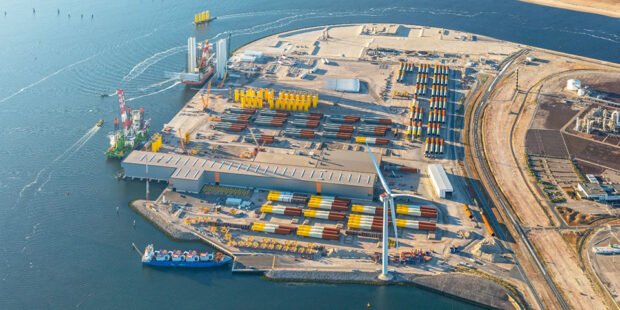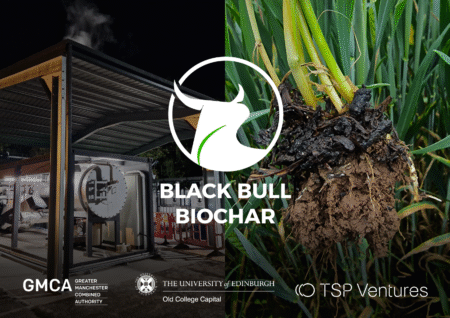Overview
The Maasvlakte 2 project, located in the Port of Rotterdam, Netherlands, represents a significant advancement in sustainable port development and coastal engineering. Initiated in 2008 and completed in 2013, this ambitious project involved the expansion of the existing port facilities into the North Sea, creating an additional 2,000 hectares of land. The project was designed not only to accommodate increasing shipping traffic but also to incorporate innovative sustainability practices, setting a new benchmark for environmentally responsible infrastructure development.
The Maasvlakte 2 project exemplifies a holistic approach to sustainability, balancing economic growth with environmental stewardship. It incorporates measures to protect biodiversity, reduce carbon emissions, and promote efficient logistics operations. The expansion aimed to enhance the port’s capacity and competitiveness while ensuring that ecological considerations were at the forefront of planning and execution.
Location
- Site: Port of Rotterdam, Netherlands
- Coordinates: 51.9467° N, 4.1840° E
Project Details
- Capacity Expansion:
- Added 2,000 hectares of land for port operations, significantly increasing cargo handling capacity.
- Designed to accommodate the latest generation of container ships, enhancing global trade connectivity.
- Environmental Measures:
- Implementation of extensive coastal protection and habitat restoration initiatives.
- Creation of new natural habitats for flora and fauna, including tidal marshes and dunes.
- Sustainable Infrastructure:
- Development of energy-efficient logistics facilities and eco-friendly transportation options within the port.
- Integration of renewable energy sources, including solar panels and wind turbines, to power port operations.
Objectives
- Economic Growth: Enhance the Port of Rotterdam’s capacity to handle future trade demands and maintain its position as a leading global logistics hub.
- Biodiversity Preservation: Mitigate the environmental impacts of port expansion by implementing measures to protect and restore local ecosystems.
- Carbon Footprint Reduction: Utilize sustainable practices and technologies to minimize greenhouse gas emissions associated with port activities.
Key Features
- Innovative Land Reclamation: The project utilized a state-of-the-art land reclamation technique involving the use of dredged sand to create new land in the North Sea.
- Sustainable Transport Solutions: The port developed a comprehensive logistics strategy that prioritizes rail and inland shipping, reducing reliance on road transport and associated emissions.
- Smart Port Technologies: Implementation of digital technologies to optimize port operations, improve efficiency, and reduce environmental impact.
Companies Involved
- Port of Rotterdam Authority: The main entity responsible for the development and management of the port facilities, leading the project execution.
- Engineering Firms: Various local and international engineering firms collaborated on the design and construction of the infrastructure.
- Environmental Organizations: Partnered with conservation groups to ensure ecological considerations were integrated throughout the project.
Funding and Investment
- Total Investment: Approximately €1.5 billion (about USD 1.8 billion), covering construction, environmental restoration, and infrastructure development.
- Funding Sources:
- Primarily financed by the Port of Rotterdam Authority.
- Additional funding from European Union grants and national government initiatives aimed at promoting sustainable development.
Performance Metrics
- Cargo Capacity: Increased annual cargo handling capacity by millions of TEUs (twenty-foot equivalent units), solidifying Rotterdam’s status as Europe’s largest port.
- Biodiversity Outcomes: Successfully restored and created new habitats, enhancing local biodiversity and providing new recreational areas for the community.
- Carbon Emissions: Implemented energy-efficient systems and renewable energy sources, contributing to a measurable reduction in the port’s carbon footprint.
Rating Criteria
- Innovation (5/5): Pioneering use of sustainable practices in large-scale land reclamation and port development.
- Environmental Impact (5/5): Strong emphasis on biodiversity preservation and ecological restoration.
- Economic Viability (4/5): Significant potential for economic growth and job creation, though subject to global trade fluctuations.
- Community Engagement (5/5): Active involvement of local communities and stakeholders in planning and development processes.
- Scalability (4/5): The project serves as a model for future port expansions and other infrastructure projects worldwide.
Results and Impact
- Economic Benefits: The Maasvlakte 2 expansion has contributed significantly to the regional economy, creating thousands of jobs and attracting new businesses to the area.
- Enhanced Logistics Efficiency: Improved logistical operations have reduced turnaround times for shipping vessels, optimizing the supply chain.
- Environmental Stewardship: The project has set a precedent for future infrastructure developments, demonstrating that economic growth and environmental protection can coexist.
- Public Awareness and Education: The project has raised awareness about sustainable practices in large-scale construction, influencing policies and practices in other regions.
Challenges
- Initial Environmental Concerns: The scale of the project raised concerns among environmentalists regarding potential impacts on marine ecosystems.
- Funding and Budgeting: Securing funding in a fluctuating economic environment posed challenges, requiring strategic planning and collaboration.
Conclusion
The Maasvlakte 2 project stands as a remarkable example of how sustainable practices can be integrated into large-scale infrastructure developments. By prioritizing ecological considerations alongside economic growth, the Port of Rotterdam has set a new standard for port expansions globally. As countries seek to balance development with sustainability, the lessons learned from Maasvlakte 2 will be invaluable in shaping future projects in the realm of infrastructure and environmental stewardship.









